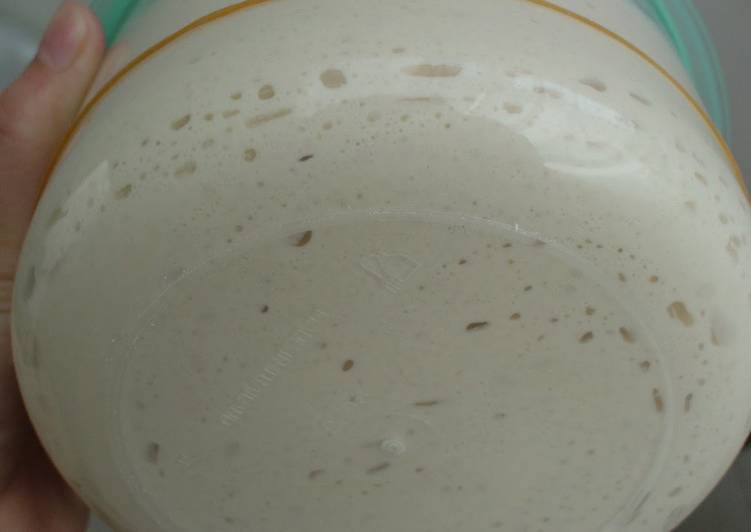Sake Lees Yeast ② - Liquid Bread Starter. If a layer of clear liquid forms on the top of your mixture just stir it back in and keep with the schedule. Most breads leavened with commercial yeast can be leavened with a natural starter. A natural starter works its magic at a much slower pace than commercial yeast, so I’ll allow for a longer (Any ingredient that is neither liquid nor flour, such as nuts or seeds or fat or sugar, is neglected here.) To make sourdough bread, you need a starter.
 The starter is kicked off with one packet of yeast, and from then on you can maintain your starter to bake with any time. For the sake of our beautiful earth and all its critters (including humans), please try to avoid single-use plastic when. I also expected a good result from the liquid fruit. You can have Sake Lees Yeast ② - Liquid Bread Starter using 5 ingredients and 9 steps. Here is how you achieve it.
The starter is kicked off with one packet of yeast, and from then on you can maintain your starter to bake with any time. For the sake of our beautiful earth and all its critters (including humans), please try to avoid single-use plastic when. I also expected a good result from the liquid fruit. You can have Sake Lees Yeast ② - Liquid Bread Starter using 5 ingredients and 9 steps. Here is how you achieve it.
Ingredients of Sake Lees Yeast ② - Liquid Bread Starter
- You need 50 grams of Sake lees.
- You need 150 grams of Cooled boiled water.
- It’s 1 of 300 ml capacity Jar.
- Prepare 200 grams of Bread (strong) flour for making the starter.
- Prepare 1 of 500 ml capacity Tupperware for the starter.
Think of sourdough starter as yeast. Only in this case, instead of buying a packet of yeast from the store, you are making your own living “wild yeast” by fermenting flour and water. Some people believe that bread made with sourdough starter is actually better for you than bread made with yeast. Making bread without yeast can open up a whole new world of baking.
Sake Lees Yeast ② - Liquid Bread Starter step by step
- Sterilize the bottle and lid. Transfer the sake lees and water in the bottle, cover tightly with a lid, and place it somewhere warm..
- Open the lid daily to let in air, close the lid, and shake well. It should start to fizz on the 3rd or 4th day..
-
- This photo shows the starter on the 4th day after shaking; it fizzes and bubbles just like a carbonated drink. After it reaches this stage, let it sit for one day and the yeast is done..
- Sterilize the tupperware. Place 100 g of the yeast mixture and 100 g bread flour in it, and stir with cooking chopsticks until it is no longer floury..
- Once it has risen to about 3 times its original size place it in the refrigerator and let it rest a day. (it took about three hours for this starter to triple in size). This is day 1..
- This is what it looks like from the bottom. Lots of air bubbles have formed! This is proof that it is fermenting!.
- Add 50 g bread flour to step 5 on the 2nd and 3rd day and mix until it’s no longer floury..
- When making the stater on the 2nd and 3rd day, return both the fermented mixture and the raw materials to room temperature and then proceed..
- Use the starter after letting it sit in the refrigerator for a day..
These two bread starter recipes, as well as two bread recipes, will help you get started. Making bread without yeast is easy. Try these two bread starter recipes and bake two delicious creations with the accompanying bread. Yeast starters are important if you want more yeast for less money. Domesticated commercial yeast replaced wild yeast for most baking because it’s easier for companies to mass produce, it’s easier for bakers to store and use, and it proofs our breads By contrast, wild yeast can be fussy and finicky.